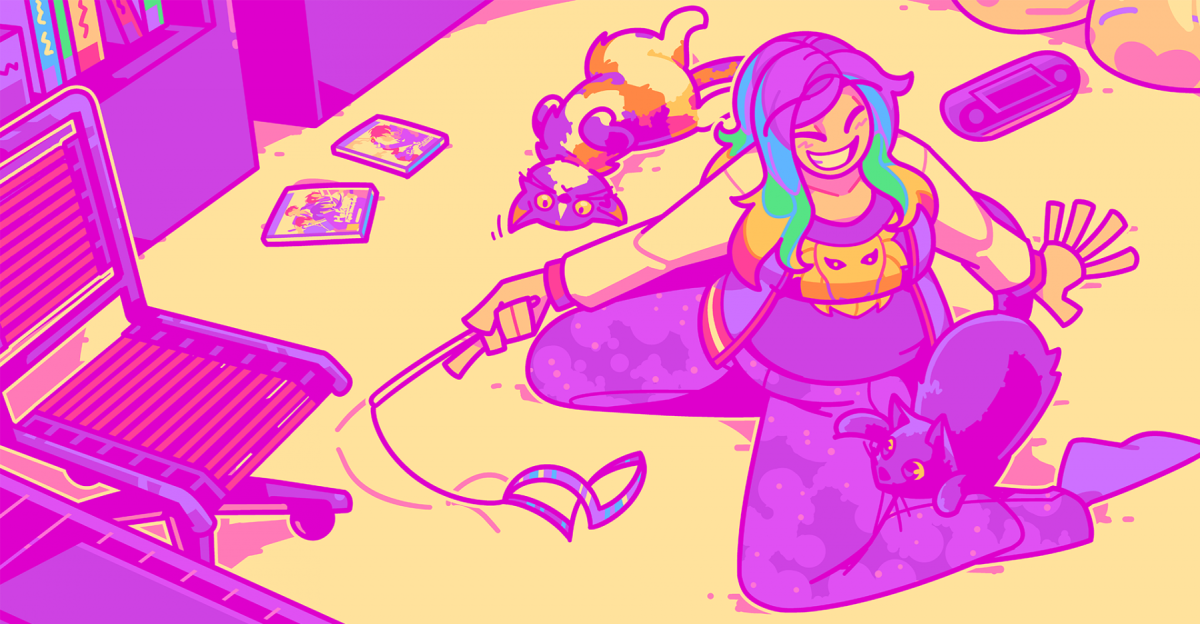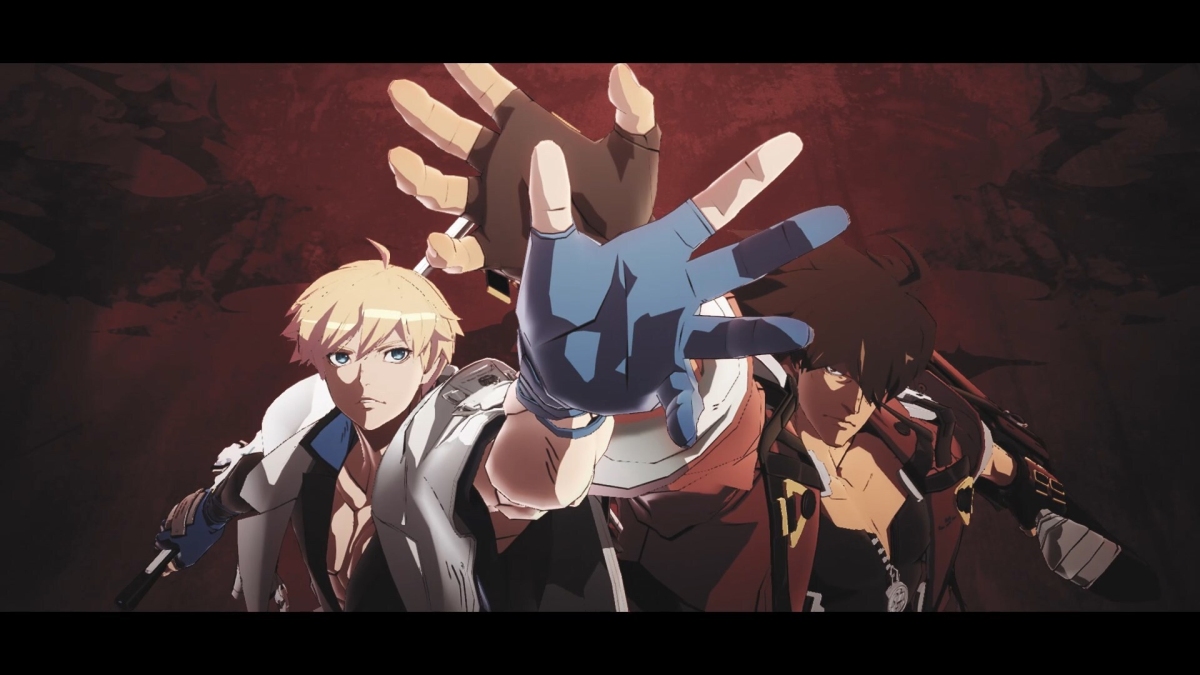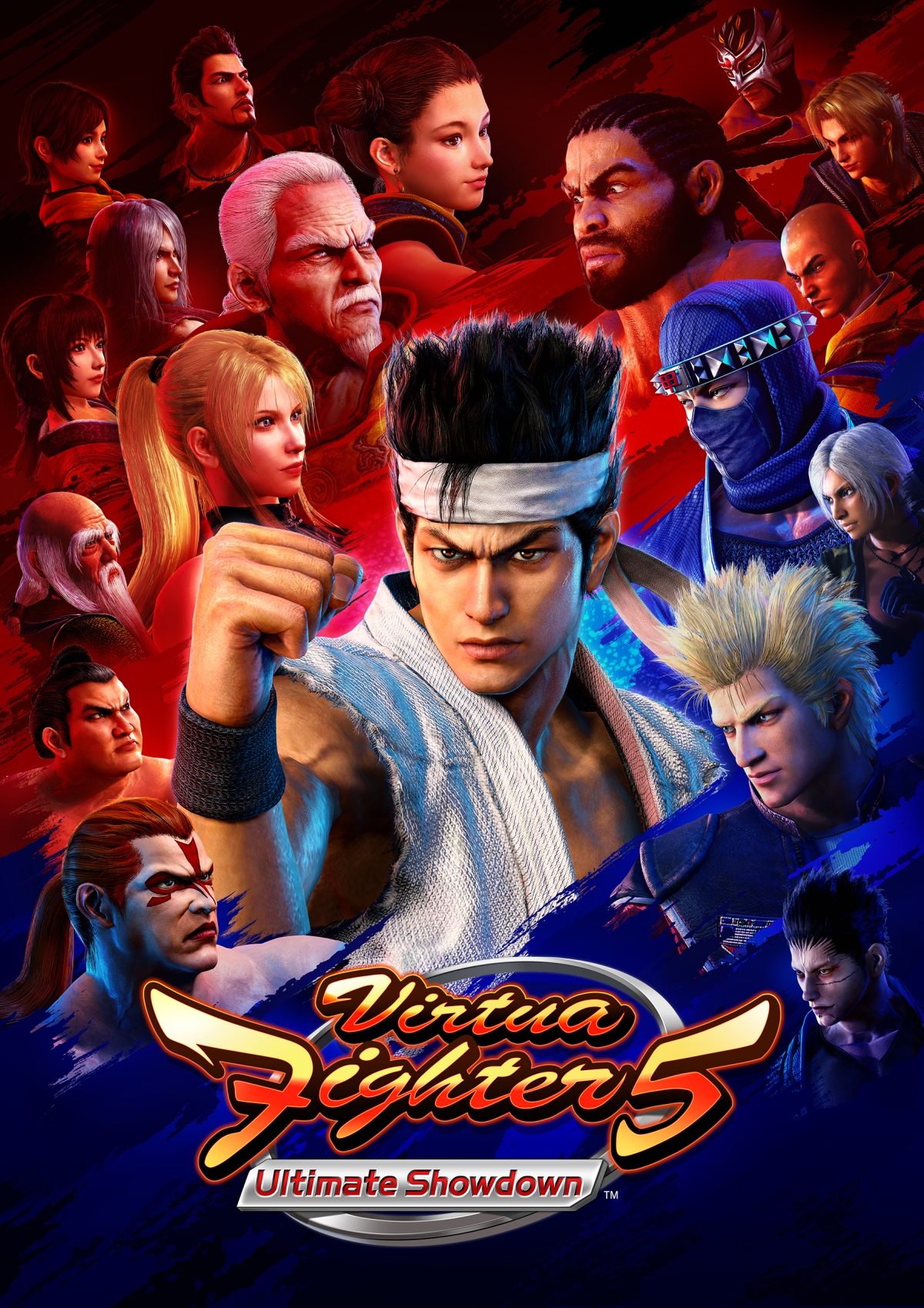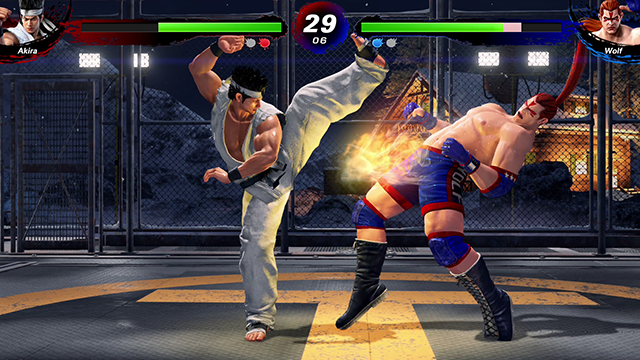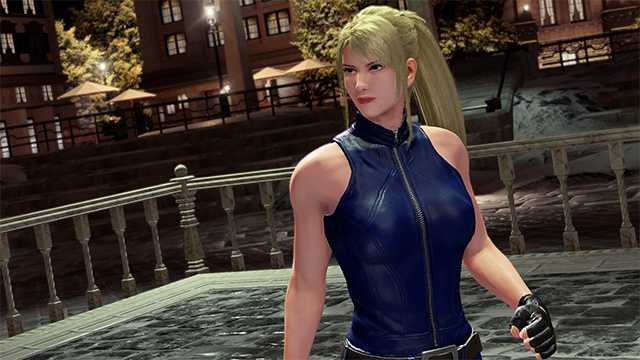
It’s no secret that Guilty Gear is one of my favorite fighting game series, and watching the series grow and evolve throughout the years I’ve played the games has been a delight. As I mentioned in my review of the beta, I found a lot of my friends through playing fighting games, and Guilty Gear was a HUGE part of that. The landscape of games, both fighting and otherwise, has changed dramatically since the first time I played a Guilty Gear game, and Guilty Gear -Strive-, arriving on the scene in the awkward point of time in which many players are neither entirely on the PS4 or PS5, comes at a time when games in general are facing a new shift. It’s been a year since any major fighting game tournament or event, meaning that fighting games are being played solely locally with people in one’s small social bubbles, or rely on netplay to get any life. In the span of the 2019-2021 timeline, this has led to frankly a lot of good fighting games getting totally forgotten or buried by netcode and low interest; turns out, big events drive a lot of players to a game.
So where does that leave Guilty Gear -Strive-? Well, that question might depend on how you appreciate Guilty Gear’s unique brand of fighting game, and that includes the way it approaches being a “complete” game at launch.
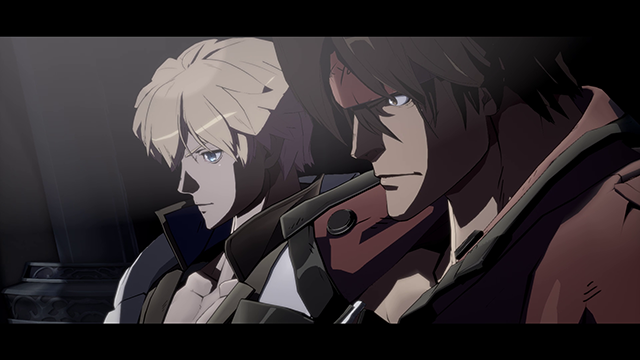
Strive picks up, quite literally, from where the last game leaves off narratively. Gameplay wise, though, there are a few changes, the most notable being the somewhat slim character roster at launch, although there are promises of upcoming DLC characters following the game’s release, so it’s possible that the game will develop to a far more robust roster than what is available at launch (which is great, because the story mode hints at numerous characters who look like they’d be an absolute blast to play as!). But one of the more odd parts of reviewing this title was the roadmap to the release of the game; much of this review is being compiled after a few final hours with the game, as much of the game is not actually on ‘disc’, but instead part of updates patched into the game.
This update structure is sort of odd for the release of a game, although most players at launch won’t know the difference, as players who buy the game will have access to the most up to date version of the game so far. Patching games, particularly fighting games, isn’t really anything new either, but it’s somewhat new to me, in the sense of reviewing a game, to find out that 95% of the story mode isn’t actually available without an update, or that fairly large changes to gameplay balance are not what I spent much of my time playing. In this case, Strive is a challenge to review, because, for example, air dashing in what I spent most of my time with is totally different to how it is now in “release” form (for the better, I assure you), but that makes me feel….Bad? Because it sort of implies that the playtesting I did for this review is speculative at best, and useless at worst.

Strive’s launch roster is Sol, Ky, Axel, Zato-1, Milia, Faust, May, Potemkin, Ramlethal, Chipp, Leo Whitefang, Giovanna, Nagoriyuki, Anji, and I-No. In my review of the Beta, I mentioned that I was pretty happy with this roster, as it showed a depth of playstyles and the unique ways in which Guilty Gear characters play, ensuring that the characters you have to pick from are all visually and mechanically distinct. My opinion on that is still pretty much unchanged, but I will say that the roster feels very small and somewhat incomplete compared to other Guilty Gear titles. Perhaps due to the focus on narrative in the newest installments of Guilty Gear, the roster of main characters stays mostly static, but gone are some of the new, more inventive characters that made their mark on Xrd. That being said, this is roughly the same amount of characters as Xrd at launch, and it seems like the DLC roadmap is setting up to follow a similar development pattern to Xrd, where new characters are introduced as the game matures.
Perhaps my one complaint here, though, is that this roster lacks much in the way of “new” playstyles, especially after some of the unique characters from Xrd like Raven, Kum, and Answer; instead, characters play roughly the same as they always have, but without much in the way of experimental new characters. Giovanna and Nagoriyuki stand out as interesting diversions from the returning characters, but otherwise players who are used to Guilty Gear will find that many of the characters play in similar manner to the way they’ve always played, albeit with some simplification in many cases. Strive is the most accessible Guilty Gear game so far, with each character (roughly) sharing a command pool; there are no complex, baroque commands, but instead most characters make use of QCF, DP, or half-circle inputs, sprinkled with a few instances of charge attacks here and there. Strive is easy to pick up and learn, which is great, as many of the other factors that make Guilty Gear unique (Roman Cancels, Dust attacks, etc.) are still here, urging players to focus on general mechanics and strategies rather than relying on playing characters who are “easier” to control than others.

That said, balance seems to be something I found odd in Strive, which is made odder by statements by the design team about characters, such as Sol, being “stronger” than other characters simply so new players can have easier times playing the game. In my experience playing the Beta, Potemkin and Sol were far more dominant than other characters, and in the limited time I’ve had in netplay before publishing this, that still seems to be the case. I’m curious to see how that affects the overall health of the game, although I would say that Sol’s “buff” isn’t entirely overpowering, just noticeable in terms of how much damage he can dish out off very little work. Potemkin, of course, is Potemkin, meaning that if you aren’t sure of how to match up against him, you’re probably going to catch a lot of Ls.
Of course, balance discussions on launch day are kinda pointless, but what I will say is that for the most part I found netplay was successful about 70% of the time. The lobby system is the same as the Beta, and this tended to leave me with lots of confusing reasons as to why my matches wouldn’t start; in some instances, I was never able to get matches when I would initiate them, but would get them by joining other lobbies. Then, suddenly, it would reverse to the opposite. In game, I had some fairly great connections, and found that netplay worked really well. This was similar to my experience in the Beta, so I’m not surprised, but I do think the netplay is really solid once you get into a match, meaning that there’s a good chance of getting high quality matches frequently, and playing with friends across the internet should give consistent, high quality gameplay.

In the wake of COVID-19, netplay is almost more important than other facets of a game, given that many events are still cancelled, and many players are unable to travel or go to even local events. While things are always improving, I do think the slate of recent fighting games that have had really solid netcode are starting to show the ability for fighting games to achieve high quality matches that are far closer to real life matches than ever before, and Strive is certainly up there. Interestingly, I found Virtua Fighter 5 Ultimate Showdown’s recent updated online to be easier in terms of actually getting matches, but I also had slightly weaker matches (with more delay and occasional disconnects) compared to Strive. That said, my experience with Strive is limited by launch day patch accessibility, meaning that as more and more players get the game, the netcode may or may not hold up under the increased player load. Still, I believe netplay is one of Strive’s strongest qualities, and players looking to get in lots of real-time play against people online will find the game very rewarding in this regard.
When it comes to other modes, things get a little more complicated. Arcade mode has players fighting off against a set of enemies, with losses and wins occasionally diverting your journey along Hard, Normal, and Easy paths. This also results in different endings, meaning that someone wanting to see everything may need to actually lose certain matches on purpose, which was an interesting mechanic. Survival is also back, tasking players to survive as long as possible against increasingly difficult CPU opponents, and Training brings various modes along with it, from standard training dummy style practice to various challenges.
The oddest standout, though, is Story mode.
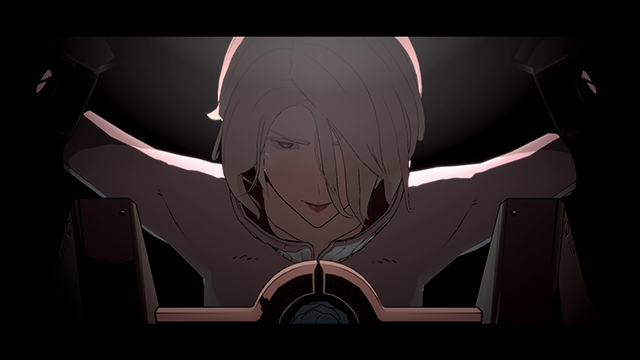
Players familiar with the Xrd Story mode will know what’s coming, but for players who are new to Guilty Gear, or unfamiliar with how Xrd did things, Story mode in Strive is essentially a long animated movie, rather than a mode in which you play or control any part of the outcome. This is both natural and unnatural, as Guilty Gear has always prided itself on a deep and fairly complex lore, but it also feels awkward to again be asked to simply sit around and watch a movie that has no real bearing on the game you’re playing other than providing that back story. In many ways, the story feels even odder in the sense that you aren’t, in your own matches, really playing through what is happening in Story mode in some parallel way. In fact, Story mode features so many characters who are unplayable, but unique, that it almost feels like some sort of separate movie set in the same universe, but without most of the notable cast. If anything, the Story mode feels like a potential hint at upcoming characters, as some of the Story mode stars are really unique and interesting looking; it would be a shame if, in the long run, these characters simply existed only in Story mode and never in any gameplay capacity.
Story-wise, the narrative really drags in spots, and also relies on you knowing excessive amounts of Guilty Gear lore to get even moderate value out of. Overall, I think Strive‘s full story will be interesting for the lore implications, but players who never interact with story modes will likely not find themselves missing out on anything here, which is sad. There is a full glossary of characters, terms, and world building to look at if you get confused, but in all honesty it feels like a LOT of work for something that has no impact on the game itself
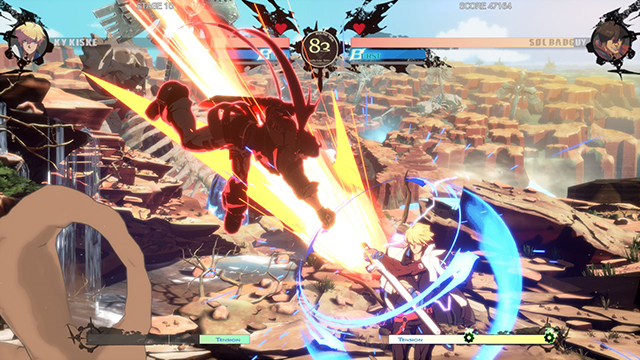
So what is my overall impression of Guilty Gear -Strive-? Is it a must buy? If you’ve been following the Guilty Gear series from its first game, the answer is a resounding YES! But for anyone looking to get into the series for the first time… my answer’s a bit mixed. Strive doesn’t do a whole lot to get new players interested in the game’s world. Strive’s Story mode makes little sense to anyone who has never played Guilty Gear before, and there aren’t many other ways to interact with the characters, meaning that a new player’s options are to either dive into the enormous amount of encyclopedic information, or give up and just play Versus mode against friends or CPUs. I think this is perhaps the biggest downside: Strive is only going to attract people based off of friend recommendations and suggestions of playing together, but isn’t going to clearly win over new players against games like Virtua Fighter 5 Ultimate Showdown, Tekken 7, or Street Fighter 5, which either provide easy accessibility or pure, no frills gameplay to get started with.
That said, Guilty Gear -Strive- is an excellent game, one that features some of the cleanest “anime” fighting and a visually gorgeous product in motion. Replays of matches look great and dynamic, and I can only imagine how hype events playing Strive will be when the crowd gets into the matches that finally visually match up with the excitement. I think that players curious to try Guilty Gear (yes, even despite my above warning) should absolutely jump on with Strive, as the roadmap shows a consistent set of updates that should keep new content slowly trickling in and a generous lifespan to the game, meaning new players can start to learn and develop as the game grows, rather than worrying about it immediately dying out or being replaced by something else.
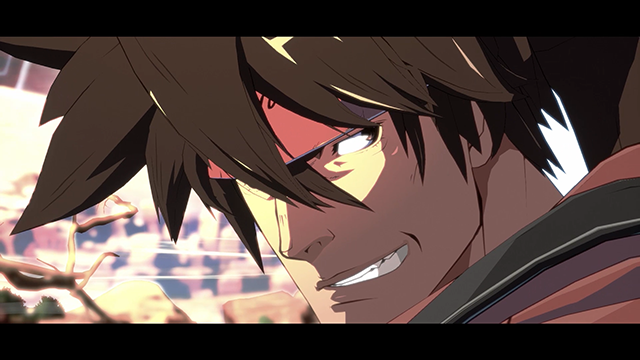
Personally, I’m excited to dive into the world of Guilty Gear fulltime again, and I do want to see the rest of Story Mode, but I think a lot of what you’re getting with Strive is a promise, more than a finished package: the promise of more updates, of future events, of a growing scene, rather than something complete in box on arrival. The game itself is great, but the rest of the package will need time to develop and see how things grow from here, to truly know what to expect. Still, between patches and updates, a truly special game can spring out of this growing seedling, and hopefully there will be lots of excitement to come from Guilty Gear -Strive-.
You can get get Guilty Gear -Strive- on the PlayStation 4, PlayStation 5, and Steam:
- PlayStation 4:
- PlayStation 5:
- Steam:
Many thanks to the wonderful crew at Arc System Works for the chance to check out the game early! Keep in touch with what they’re up to by following them on Twitter, Facebook, Instagram, YouTube and Twitch.
Until next time! ✨
Who’s going to be your main character on Guilty Gear -Strive-? Any of the new characters’ caught your eye? Let me know in the comments!

